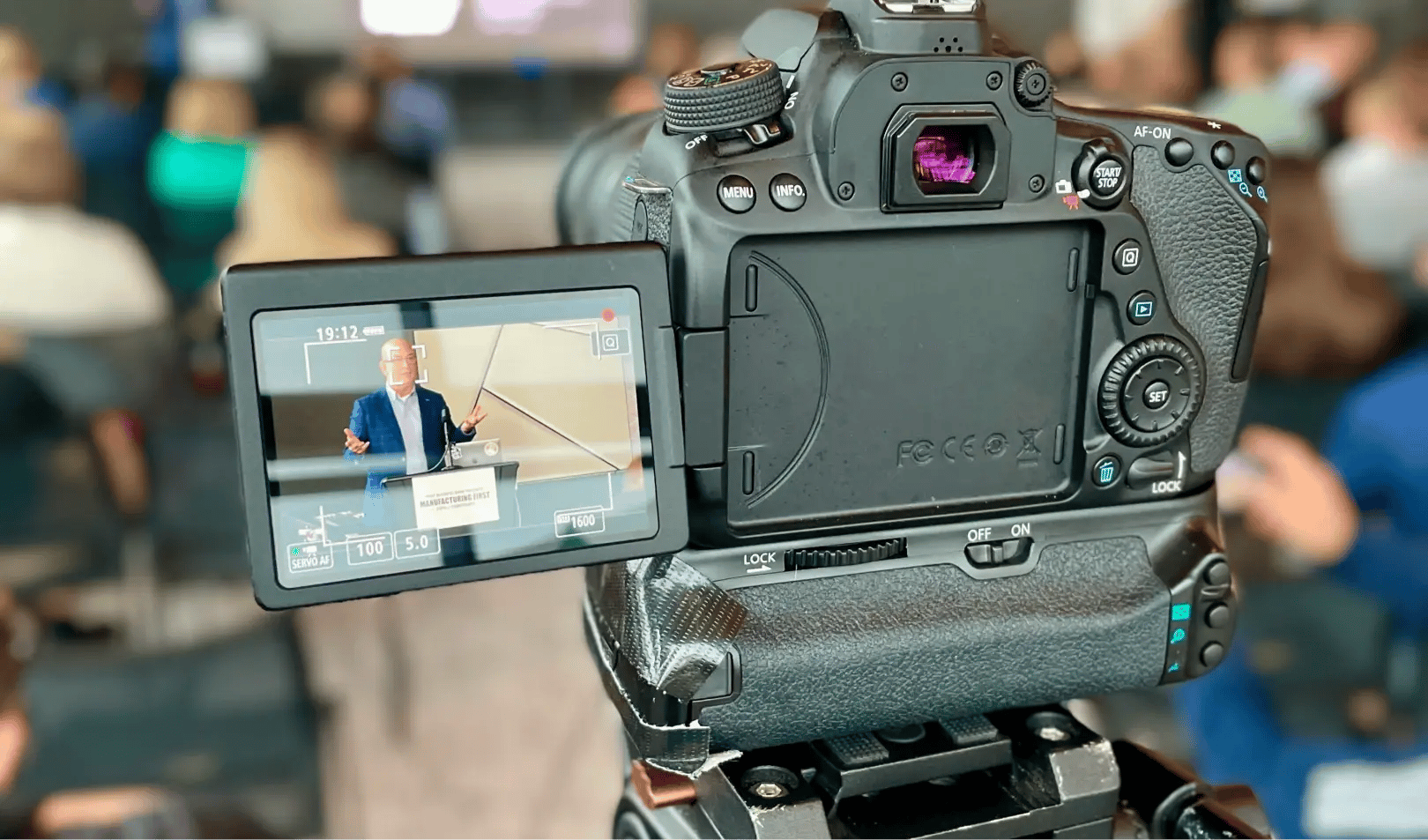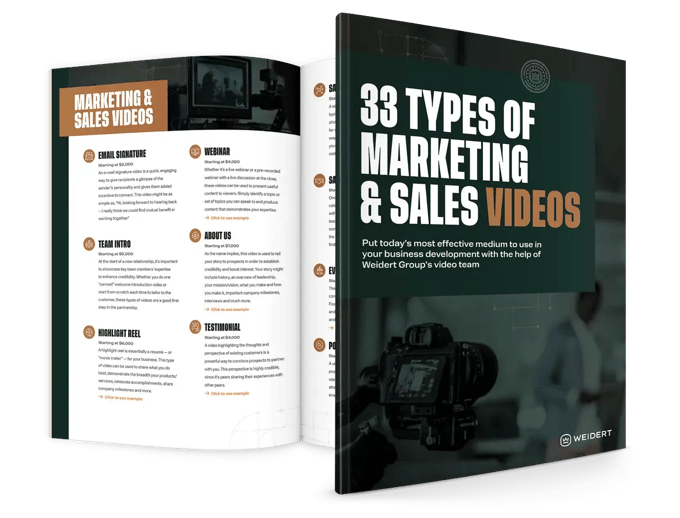VIDEO SERVICES
Engage & Motivate
No medium has greater power to engage, inform, and motivate than video. A powerful combination of visual, motion, and audio, it’s the best platform from which to present compelling messages — in fact, it’s the way the majority of people today prefer to learn about brands.

Watch Our
HIGHLIGHT REEL
DID YOU KNOW?
Videos Are Profitable
(Because they sell!)
of marketers say they’ve gotten a good ROI from video marketing — because videos sell products better than any other medium
Buyers Learn
“Better” With
Video
of people have watched an explainer video to learn more about a product or service; 89% say the video has convinced them to buy the product or service — because you can tell a more compelling story than with words alone
Demand
is
Increasing
of buyers want to see more online video content from brands — because they learn from and enjoy watching them
Videos
Get
Shared
of people are more likely to share video than any other type of content — more eyes on your video means more potential sales
LOOKING TO LEARN ABOUT VIDEO MARKETING?
Our Video
MARKETING SERVICES
Short of a major motion picture, our video and photography team has done it all. Here are some of the video types our clients use to fuel their marketing and HR efforts:
Highlight Reels
A highlight reel is essentially a resumé – or “movie trailer” – for your business. This type of video can be used to share what you do best, demonstrate the breadth of your products/services, celebrate accomplishments, share company milestones and more.
Testimonial Videos
A video highlighting the thoughts and perspective of existing customers is a powerful way to convince prospects to partner with you. A customer’s perspective is very influential, since it’s a person talking about their experiences to their peers.
How-to Videos
Often customers and prospects have questions about how to do something with your product, such as “How do I retrofit a new valve onto my XYZ pump?” This type of video gives the answer and does it in a way that’s easier to understand than words alone.
Before & After Videos
Seeing the before and after of product use makes a powerful “see the results for yourself” video. This can be done by using side-by-side comparison photography or footage, animated infographics showing data and results, or interviews that document results. Similarly, a company case study can be made more interesting and compelling when presented as a short video.
About Us Videos
This type of video is used to tell your story to prospects in order to establish credibility and boost interest. Your story might include history, an overview of leadership, your mission/vision, what you make and how you make it, important company milestones, interviews and much more.
Case Study Videos
A company case study can be made more interesting and compelling when presented as a short video. These videos often include the customer’s testimonial, animated statistics/metrics, and footage of the product and results featured in the case study.
Explainer Videos
Explainer videos take something complex and break it down into something simple and easy to grasp, either using video footage or animation, or both. The video can be used to explain how something functions (such as the gears in a motor) or to explain a concept or idea.
Time-lapse Videos
This type of video is used to capture the steps or activities involved in an extended project or event; most often it’s used to show the progress of large construction projects. It can also be used to capture the energy of a high-traffic event like a trade show and later be leveraged to promote an upcoming event.
Employee Onboarding, Training & Safety Videos
Onboarding videos help HR teams consistently and effectively train their people on processes and protocols, benefits information, role definitions and expectations, org charts, safety measures and more. Watching a training results in better understanding and adoption.

There’s Even More
The list above is just a fraction of the potential types of sales and marketing videos you could create to attract, engage, and delight your audiences — from strangers all the way to existing customers and even internal customers.
Click the button below to access the full list 33 Types of Marketing & Sales Videos. It includes descriptions, examples, and an estimated production investment for each.
PHOTOGRAPHY SERVICES
Our full-frame DSLR cameras, lighting equipment, and skilled photographers are available for any production, day or night. Rather than relying on stock photos for your website and content (which can be a bit cheesy), many clients want real images of their facilities, people, products and use cases.
This is especially important in an inbound marketing and sales program because your content is crucial to building trust, establishing credibility, and demonstrating thought leadership to your audience.
/PhotoServices.webp?width=940&height=628&name=PhotoServices.webp)
